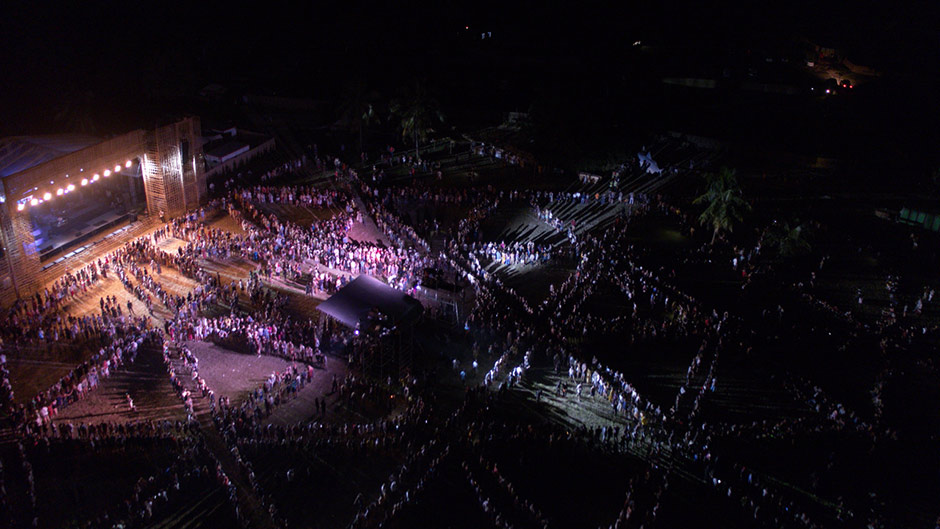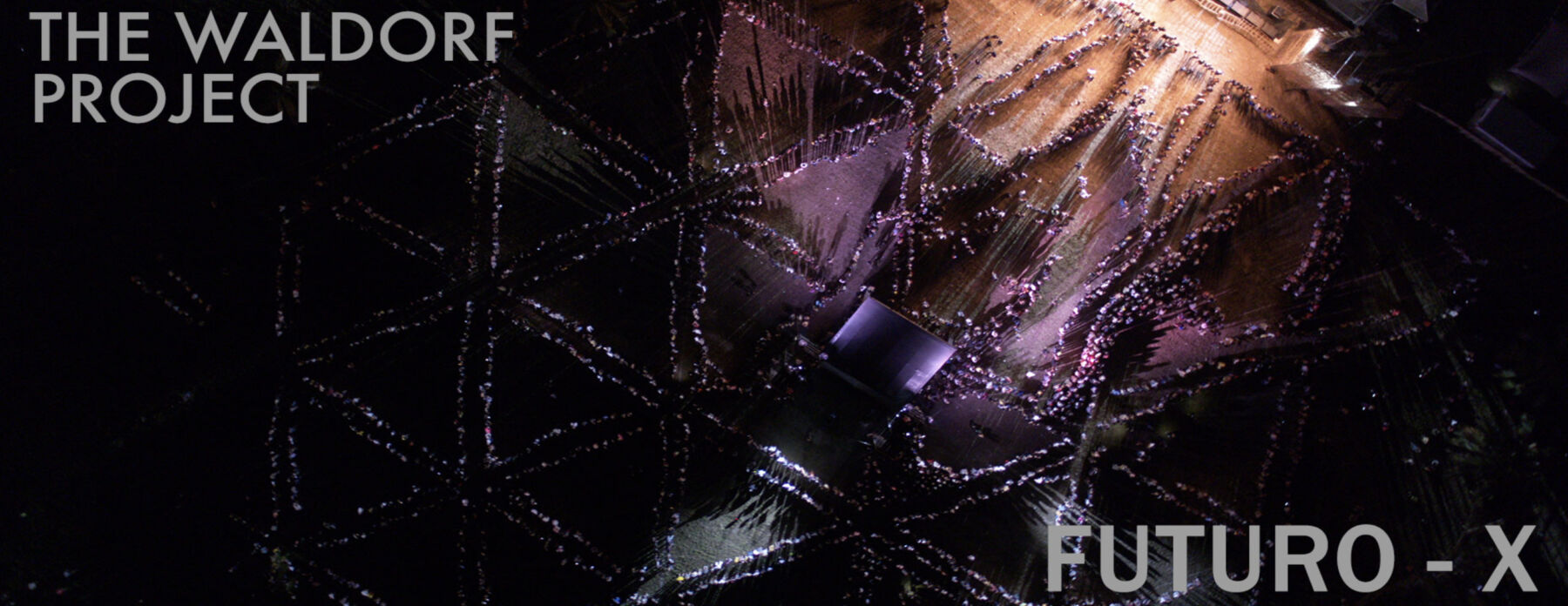Text by CLOT Magazine

We’ve talked about The Waldorf Project in previous instances. A project incepted and directed by Sean Rogg, The Waldorf Project is an immersive experience and an exploration through all the senses where art is consumed as a means and medium. Central to this concept is the synergy between the various aspects of the event (art, gastronomy, performance, couture, sound, and light) and the creativity of a very tight team.
For these performances, everything is staged to the infinite detail. One of the key aspects of the project is that it evolves through the course of its instalments. Chapter 3/FUTURO was inspired by the prefabricated flying saucer-shaped house “Futuro” designed by Matti Suuronen in the late 1960s with a vision of a utopian society.
Amidst feelings of disorientation and disconcert (unfamiliar smells, textures, tastes, shapes, spaces…) and a sense of lost personal identity, FUTURO was an empathy experiment, a ritualistic passage to enjoy on one’s own but at the same time to share a close moment with unfamiliar people.
The Waldorf Project team has been busy in the next step of FUTURO, and last December, in collaboration with Wonderfruit Festival (Thailand), they attempted -and succeed- in something never done before, the world’s biggest experiment in empathy engineering, FUTURO-X. 4200 people were united as a single organism, connected for a moment as one.
If in the earlier iterations of ‘FUTURO’ staged in London, The Waldorf Project used a team of 4 dancers and an audience of 40, this time they made a radical shift to an integration of 4200 people. From four dancers, they moved to more than 150, each wearing the mesmeric Future Tech illuminated textile dresses designed especially by Elena Martin. The canvas for FUTURO – X was a ‘Neural Net’ – a 7km² grid constructed on the floor of the jungle that enabled the event’s incredibly complex logistics and mathematics to work on such a colossal scale.
Sean Rogg shared with us: FUTURO-X has been the most intense thing I have ever done, certainly the most complicated and nerve-wracking moment from any Waldorf performance. But thanks to the A.I. and years of practice with my team, I felt confident that we would pull it off. On the day of the event, the energy was so profound I want to explore this again…more large scale Waldorf performances will take place.
This empathy experiment seems it must have been something hard to forget. Participants recall an intense experience. Ethan McAuley recalls: This experience had a really profound effect on me. The earlier half of the performance was really hard for me. As someone who works in events, darkness is usually preceded by panic. Darkness means something went wrong, a generator failed, or something catastrophic could happen. So from the outset, I was already on edge. I was very anxious and felt emotionally embattled by the music and the activity surrounding me. It forced me to either quit or give in, and I am so so glad I stuck it out.
What followed was, for me, a form of forced meditation in kindness. The performers were amazing. The design of the experiment – from the physical location to the grid to the movements of the dancers – meant that all I had to do was submit. It’s not often I get thirty minutes to ignore the world and connect with someone else. It’s something I won’t forget, and I want to thank you and the team involved for allowing me to experience this.
In the last few years, we’ve seen a resurface in meditative and healing techniques, maybe as a reaction of the gigantic dive into technology we are experiencing in our daily lives. At the same time, many of these techniques are based on Physics principles moving them away from the image of esoteric. And similar to meditation, empathy, in times where people spend hundreds of hours on their own in front of a computer, is a poetic way to reconnect with our inner self and with each other.






